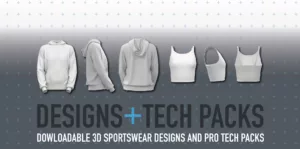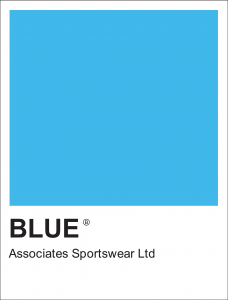Sustainability has become the buzzword within the activewear sector as the world wakes up to the damage synthetic fibres are doing to our planet.
This sector of sustainable and recycled fabrics has grown dramatically over the last 2-3 years and most fabric mills now have a range of fibres that have been used to create their sustainable or recycled fabrics.
There are now lots of choices in terms of sustainable solutions to create your eco-friendly sportswear from and we have compiled an easy to download guide to help you select which fibre or fabric might be most suitable for your brand.

This all sounds perfect and easy to switch from traditional virgin Petrochemical synthetics to fully sustainable fabrics with a click of a button, however, there are still some issues that need to be taken into consideration as it’s not quite that simple yet.
Unless you are an established brand and ordering large quantities of each style, selecting sustainable fabrics won’t be as straightforward as you think. The main issue lies in the MOQ required by the fabric mills for their recycled and sustainable qualities.
Because this is still relatively new and most fabrics are still fully synthetic, the MOQ required to produce recycled or sustainable qualities are much higher than normal. This increase in normal MOQ is driven by two factors, one being the yarn MOQ and the other being the machinery set up to knit/weave these sustainable qualities.
Because synthetics are still the bulk of most fabric mills production, they don’t need to clean and calibrate the machinery to handle the production process and they stock the synthetic fibres, allowing them to easily turn on smaller batches of fabric and even hold the stock fabric in either greige (undyed) or core stock colours for you to select from.
Recycled fibres are not held in stock by most of the mills and therefore when you select a sustainable quality, the factory must adhere to the MOQ of the fibres and clean and calibrate the production line for each specific order. These two factors drive up the overall MOQ.
This also influences the general lead time of the fabric production as these tend to be much longer than using non-sustainable fabrics as stock isn’t readily available.
So where does this leave us? Sustainable and recycled fabrics are achievable; however, you need to select qualities and fabric mills that actively reduce their MOQ’s or hold fibre or greige so that you don’t need to commit to huge volumes. This obviously affects where you can source your fabrics from, and which mills you can work with if you are a small brand or start-up business.
To give you an idea of the differences in quantity, a mill we use in the Far East that have a large collection of recycled nylon and polyester qualities require an MOQ of 15,000mtrs compared to their normal MOQ of 3,000mtrs for non-recycled polyester or nylon.
You can pay surcharges to the mill for the weaving and dying process to reduce this MOQ, however, the MOQ only reduces to 5,000mtrs which is still a lot of fabric to consume for most small sportswear brands.
Until sustainable and recycled fabrics become much more popular, the choice of which qualities and fabric mills you can work with remains much more limiting and you need to be prepared to compromise when it comes to MOQ’s, surcharges and lead times.
At Blue Associates Sportswear, over 75% of our clients now request sustainable or recycled fabrics and we have established a wide selection of suitable qualities from mills around the world that can cater for small brands and start-ups.
If you are looking to establish a collection of sustainable activewear and want to understand the options available, then please get in touch now.




